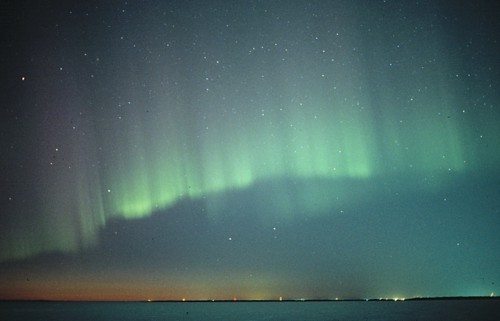FMI Scientist's Guide to Keograms
Scientist's Guide to Keograms
This page demonstrates the use of keograms
when checking for data availability or searching for interesting
events.
A keogram is a time-versus-latitude plot created from the individual images captured
during the night. They yield information of the auroral activity
during the whole night in one easily transferable image. The current
all-sky stations run by FMI produce keograms every day,
and new data are placed in WWW for public access as soon as
possible.
Keograms can be considered images from imaging
photometers - the pixel column corresponds to the latitude coverage of
the all-sky camera. In case of cameras with filters and a filter wheel,
we usually create the keograms from the wavelength of 557.7nm (ie. green line).
Colour images naturally result in colour keograms.
Please note that the instructions here should
be considered guidelines. You should first use common sense in
combining the tips below. Of course, for "real interpretation"
we need to use the actual images.
|
|
Pretty southward drifting clouds illuminated by the Moon.
The dark band at the lower edge of the keogram comes from the trees in the southern horizon. |
|
|
Thick and even cloud cover moving into the camera field-of-view.
Typical sight in the Helsinki images and very bright because of the light pollution of the city around.
|
|
|
Drifting clouds that look very much like an auroral activity.
Images reveal that there are nothing but clouds there.
|
|
|
Real aurora in the colour keograms.
The advantage of the colour is that aurora is always (yellow-ish) green. The clouds later that night
have a different shade.
|
|
|
Nice night for any event study: multiple
onsets, no Moon, lots of activity in the evening. |
|
|
Surprisingly many nights contain the image of
the Moon somewhere. As the Moon crosses the longitude of the
station, it is "line-scanned" and a circular object is seen in the
keogram. It does not spoil auroral observations,though. Nice auroras
here: first discrete and then diffuse in the early
morning. |
|
|
It was cloudy at this particular
station. Fog and clouds result in diffuse images like this. It is a
good idea to check the other stations - another reason to have many
stations. |
|
|
Nothing can be seen. Now there are two
possibilities: either there was no auroral activity or it was
cloudy. |
|
|
Auroral recordings started around 14:20UT, but
were interrupted by a power failure around 15:30UT. Recordings then restarted
around 19:20UT. There are uninterruptible power supplies at every station, but
their capasity is not large enough to operate the system for several hours.
Note the white marks at bottom of the keogram that indicate "no images".
|
|
|
The bits were like multiplexed through a
time-flux capacitor, and...
(read = that camera has not operated
as it should have) |
|
|
This small "Not Available" label simply means
that the keogram is not available. It does not mean
anything else: we may have hundreds of images from that time period,
but there is, for some reason, no keogram. |
More information: Kirsti Kauristie
e-mail: firstname.lastname@fmi.fi

